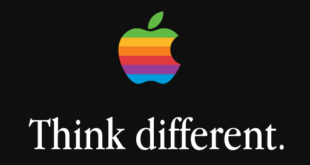Tips for How To Read a Funnel Chart
With a rapid increase in the demand for process efficiency and real-time reporting, the desire to interpret complex data visually is scaling exponentially. Funnel charts, among other data visualization tools, have become an indispensable tool for modern businesses. They offer an easy-to-understand graphical representation of data, making potential issues apparent for immediate resolution. In this article, we’ll explore how to read a funnel chart and how to use them effectively.
Understanding the Basics of a Funnel Chart

A funnel chart is a type of data visualization tool that displays values in progressively decreasing proportions. This graphical representation is apt in displaying the stages of a process and helps visualize potential problem areas. The name ‘funnel chart’ derives from its shape, reminiscent of a funnel, which generally larges at one end and tapers off at the other end.
Like funnels in real life, funnel charts have a wide entry at the top for initially inputted data, narrowing down at each stage of the operation. The decrease from one phase to another can signify the loss of data or a sequential process such as the conversion rates in a sales process or website analytics.
Step-by-Step Guide on How To Read a Funnel Chart
Reading funnel charts can follow a step-by-step process. Once the data is arranged in descending order, the largest value will be at the top end (the widest part of the funnel). The rest of the data then follows in the same order to form the funnel shape. An important concept in understanding a funnel chart is the step conversion rate, which shows the rate of changes as one moves from one step to another.
A single glance at the funnel chart reveals the most significant values, the least values, the pattern of the data, and perhaps the standard deviation. Equipped with these insights, one can discern where efforts need to be intensified or reallocated for effective resource management.
However, reading a funnel chart isn’t just about looking at the volume of data. One must grasp the implications of the patterns and changes in data sizes, considering the relevant factors affecting the data in question. Understanding the business implications of the decrease in data volume, for instance, is integral to making informed decisions regarding the business process
Therefore, reading a funnel chart is a two-fold process: understanding the visualization and extrapolating essential business insights from it.
Common Mistakes When Interpreting a Funnel Chart

Misreading or misinterpreting a funnel chart might doom a business to irreversible mistakes. One common misinterpretation is overlooking slight deviations from the ideal triangle shape. While a perfect triangle shows flawless operation, tiny deviations might imply significant systematic failures in the process, not to be ignored.
Similarly, business analysts may misunderstand the nature of the data represented. For example, while a smaller bottom end of the shaft may indicate a bottleneck in a sales process, it might symbolize quality control in a production process. Misunderstanding these nuances could result in a gross misinterpretation.
Lastly, interpreting a funnel chart in isolation might be misleading. It’s essential to remember that a funnel chart, like any other data representation tool, operates within the context of other supporting data. Hence, any interpretation should be within the broader perspective of the entire business operations.
Overall, understanding how to read a funnel chart can foster a comprehensive understanding of funnel charts. This knowledge could prove invaluable in improving the efficiency of your processes and ultimately driving your business success.
 Epic Heroes Entertainment Movies Toys TV Video Games News Art Pop culture news goodness
Epic Heroes Entertainment Movies Toys TV Video Games News Art Pop culture news goodness




